Private First Class
Company C, 1st Battalion, 5th Marines, 1st Marine Division

June 20, 1930 - March 26, 1953
MIA ~ Presumed KIA
Private First Class
Company C, 1st Battalion, 5th Marines, 1st Marine Division

June 20, 1930 - March 26, 1953
MIA ~ Presumed KIA
An account of what happened as described by the Marine Corp is
told in the following documents that you see listed under War Papers. My Uncles personal
information is listed in the first paragraph on page one of the document. All you need to do
is click on the individual thumbnails and a new window will open with an image of the actual
document they sent to our family. Once you see the image, you can click anywhere on the image
to enlarge it enough to be able to read it clearly.
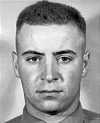 |
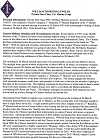 |
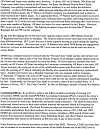 |
 |
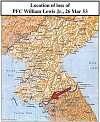 |
Private First Class Lewis was awarded the Purple Heart,
the Combat Action Ribbon, the Korean Service Medal, the United Nations Service Medal, the
National Defense Service Medal, the Korean Presidential Unit Citation and the Republic of
Korea War Service Medal.
William's Medals & Ribbons
Purple Heart
 |
Criteria - Awarded as an entitlement entitled upon being killed or wounded in a manner meeting the specific criteria of AR 600-8-22: (1) In any action against an enemy of the U.S.; (2) In any action with an opposing armed force of a foreign country in which the Armed Forces of the U.S. are or have been engaged; (3) While serving with friendly foreign forces engaged in an armed conflict against an opposing armed force in which the U.S. is not a belligerent party; (4) As a result of an act of any such enemy of opposing armed forces; (5) As the result of an act of any hostile foreign force; (6) After March 28, 1973, as a result of an international terrorist attack against the U.S.; (7) After March 28, 1973, as a result of military operations, while serving outside the territory of the U.S. as part of a peacekeeping force; (8) After December 7, 1941, by weapon fire while directly engaged in armed conflict, regardless of the fire causing the wound; (9) While held as a prisoner of war or while being taken captive. Additionally, individuals wounded or killed as a result of friendly fire in the heat of battle will be awarded the Purple Heart as long as the "friendly" projectile or agent was released with the full intent of inflicting damage or destroying enemy troops or equipment. |
Combat Action Ribbon
 |
Criteria - Awarded principally to U.S. Navy and Marine Corps
service members in any grade including and below that of a Captain in the Navy (or Colonel
in the Marine Corps) who have actively participated in bona-fide ground or naval surface
combat with hostile enemy forces. Such performance under enemy fire must be deemed
"honorable and satisfactory" which excludes the award to those who show cowardice in the
face of an enemy or retreat without cause. U.S. Army personnel who earned the Combat
Infantryman Badge or Combat Medical Badge while a member of the Army may be authorized to
wear the Combat Action Ribbon upon application to the Department of the Navy. The Combat
Action Ribbon is also awarded to members of the United States Coast Guard when operating
under the control of the Navy. The Combat Action Ribbon was first created in February 1969
with retroactive presentation to 1961-03-01. On 1999-10-05, by Presidential Order of Bill
Clinton, the retroactive effective date of the Combat Action Ribbon was changed to
1941-12-07 which was the entry date of the United States of America into the Second World
War. Additional decorations of the Combat Action Ribbon are denoted by gold and silver
award stars.
Note: This service ribbon is one of the few awards issued by the military as a ribbon only. There is no accompanying medal. |
Korean Service Medal
 |
Criteria - Awarded to any U.S. service member, performing duty in the Republic of Korea, between June 27, 1950 and June 27, 1954. There were 13 official campaigns in the war - each annotated by service stars on the medal. Service stars are authorized for participation in the following campaigns: North Korean Aggression (Navy): June 27 to November 2, 1950; United Nations Defensive (Army, USAF): June 27 to September 15, 1950; United Nations Offensive (Army, USAF): September 16 to November 2, 1950; Chinese Communist Forces Intervention (Army, USAF): November 3, 1950 to January 24, 1951; Communist China Aggression (Navy): November 3, 1950 to January 24, 1951; Inchon Landing (Navy): September 13 to 17, 1950; First United Nations Counteroffensive (Army, Navy, USAF): January 25 to April 21, 1951; Chinese Communist Forces Spring Offensive (Army, Navy, USAF): April 22 to July 8, 1951; United Nations Summer-Fall Offensive (Army, Navy, USAF): July 9 to November 27, 1951; Second Korean Winter (Army, Navy, USAF): November 28, 1951 to April 30, 1952; Korean Defense Summer-Fall, 1952 (Army, Navy, USAF): May 1 to November 30, 1952; Third Korean Winter (Army, Navy, USAF): December 1, 1951 to April 30, 1953; Korea, Summer 1953 (Army, Navy, USAF): May 1, 1953 to July 27, 1953. For participation in the amphibious landing at Inchon, and the airborne attacks on Sukch'on-Such'on and Musan, an arrowhead device is authorized in addition to campaign service stars. |
United Nations Service Medal
 |
Criteria - An international military decoration established by the United Nations on December 12, 1950. Awarded to any military service member, of an Armed Force allied with South Korea, who participated in the defense of Korea from North Korean aggression between the dates of June 27, 1950 and July 27, 1954. In the United States Armed Forces, any service member awarded the Korean Service Medal is automatically granted the United Nations Service Medal. On November 22, 1961, the United Nations officially changed the name of the United Nations Service Medal to the United Nations Korean Medal. The United States Department of Defense continues to refer to the decoration as the United Nations Service Medal in an effort to maintain consistency with older military files referring to the decoration by its original name. The decoration was the first international award ever created and recognized the multi-national defense forces which participated in the Korean War. |
National Defense Service Medal
 |
Criteria - Awarded to anyone who serves on active duty in the United States military during a designated time period. In the fifty years since the creation of the National Defense Service Medal, it has been authorized for the following time periods; June 27, 1950 to July 27, 1954 for service during the Korean War; January 1, 1961 to August 14, 1974 for service during the Vietnam War; August 2, 1990 to November 30, 1995 for service during the Gulf War; September 11, 2001 to a date yet-to-be-determined for service during the War on Terrorism. For service in the Gulf War and War on Terrorism, it is also authorized for members of the military reserve provided they are a “military reservist in good standing.” The National Defense Service Medal is further authorized to students at the service academies, but is not granted to discharged or retired veterans who did not serve in one of the above time periods. The decoration is also not authorized to members of the inactive reserve. The award was intended to be a “blanket campaign medal” issued to any member of the United States military who served in a designated time period of which a “national emergency” had been declared. As of 2005, it is the oldest service medal which is still issued to the active military. |
Korean Presidential Unit Citation
 |
Criteria - A decoration issued by the government of South Korea
to both Korean military and foreign units. The last major issuance of the decoration was
during the Korean War when the decoration was bestowed to several U.S., United Kingdom and
Commonwealth military units. By order of the Korean government, the award was also
retroactively authorized to every unit of the United States Army having deployed to Korea
between 1950 and 1954.
Note: This unit citation ribbon is one of the few awards issued by the military as a ribbon only. There is no accompanying medal. |
Republic of Korea War Service Medal
 |
Criteria - A decoration issued by the government of South Korea
to both Korean military and foreign units. The last major issuance of the decoration was
during the Korean War when the decoration was bestowed to several U.S., United Kingdom and
Commonwealth military units. By order of the Korean government, the award was also
retroactively authorized to every unit of the United States Army having deployed to Korea
between 1950 and 1954.
Note: This unit citation ribbon is one of the few awards issued by the military as a ribbon only. There is no accompanying medal. |
_____________________________________________________________________________________
The Courts of the Missing
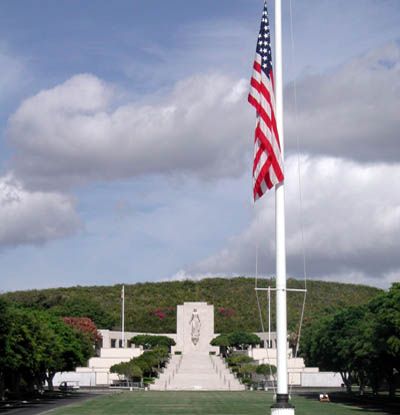
The memorial includes a chapel, two map galleries, and a 70-step
staircase leading from the crater floor to the Court of Honor. Flanking the massive
staircase are 10 Courts of the Missing, where the names of 28,778 war heroes missing in
action or lost at sea are recorded. A 30-foot female figure known as Columbia graces the
front tower of the memorial, under which are engraved the words of sympathy expressed by
President Lincoln to the mother of five sons killed in battle, "...The solemn pride that
must be yours to have laid so costly a sacrifice upon the altar of freedom."
At the base of the staircase is a marble plaque with the
following words transcribed upon it...